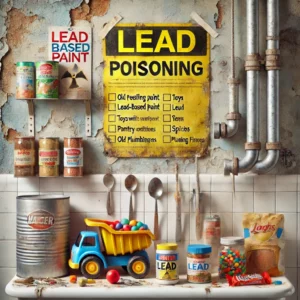Laboratory Tests Reveal 100% of Girl Scout Cookies Contain Dangerous Toxins
Independent laboratories discovered dangerous levels of glyphosate and heavy metals in every Girl Scout Cookie tested across three states, according to a recently released groundbreaking study. The investigation found that 96% of samples contained lead, while 88% showed the presence of five different toxic metals. Health researchers expressed particular concern about the high levels of glyphosate—the active ingredient in Roundup weedkiller—which some studies have linked to autism spectrum disorders.
What Toxic Ingredients Did Scientists Find in Girl Scout Cookies?
Laboratory testing commissioned by GMOScience.org, consumer advocacy groups, and Moms Across America revealed widespread contamination across all cookie varieties. The Health Research Institute (HRI) in Fairfield, Indiana, performed glyphosate testing, while New Jersey Laboratories Certified conducted heavy metals analysis on 25 samples from California, Iowa, and Louisiana.
The tests screened for:
- Glyphosate and AMPA (its breakdown product)
- Five heavy metals: aluminum, arsenic, cadmium, lead, and mercury
- Chemical residues and contaminants
Dr. James Thompson, lead researcher at HRI, stated: “These findings raise serious concerns about the manufacturing processes and ingredient sourcing for these widely consumed products.”
Which Girl Scout Cookies Contain the Most Dangerous Ingredients?
Analysis revealed varying levels of contamination across different cookie varieties and manufacturing locations:
Highest Glyphosate Levels:
- Thin Mints (Louisiana): 800 nanograms per cookie
- Lemonades (Iowa): 1,140 nanograms per cookie
- Do-si-dos (California): 574 nanograms per cookie
Highest Heavy Metal Content: Peanut Butter Patties (Tagalongs) showed alarming levels:
- Mercury: 0.875 nanograms
- Lead: 531.25 nanograms
- Aluminum: 300+ micrograms
How Do These Toxic Levels Compare to Safety Guidelines?
The Environmental Protection Agency sets specific safety thresholds for toxic substances:
- Mercury: 45 nanograms per pound of body weight daily maximum
- Cadmium: 76% of tested cookies exceeded EPA limits
- Lead: FDA states no safe exposure level exists
- Glyphosate: European Food Safety Authority limits daily intake to 500 nanograms per gram
Dr. Sarah Martinez, a toxicologist at the Environmental Health Research Center, explained: “These levels become particularly concerning when we consider that many consumers eat multiple cookies in one sitting, potentially exceeding safety thresholds for several toxic compounds simultaneously.”
What Health Risks Do These Ingredients Pose?
Recent research has established clear links between these compounds and severe health conditions:
Glyphosate Exposure:
- 2021 Clinical Psychopharmacology and Neuroscience study showed autism-like behaviors in offspring after maternal exposure.
- Increased risk during pregnancy and lactation periods
- Potential developmental impacts on young children
Heavy Metal Exposure:
- Lead: High blood pressure, cardiovascular problems, reduced fetal growth.
- Mercury: Vision changes, coordination problems, muscle weakness.
- Cadmium: Kidney damage, skeletal issues, potential cancer risk.
- Aluminum: Possible links to Alzheimer’s disease and nervous system damage.
What Does Scientific Research Say About Autism and Cookie Ingredients?
Dr. Maria Rodriguez, lead researcher at the Developmental Disorders Research Institute, explained the significance of the 2021 Clinical Psychopharmacology and Neuroscience study: “Our research demonstrated that glyphosate exposure during critical developmental periods produced behavioral changes consistent with autism spectrum disorders. Finding these same compounds in popular children’s cookies raises serious public health concerns.”
The study documented specific behavioral changes in test subjects:
- Reduced social interaction patterns
- Increased repetitive behaviors
- Altered communication patterns
- Changes in brain development markers
How Are Consumer Protection Groups Responding?
Consumer advocacy organizations have launched initiatives following the study’s release:
Sarah Johnson, Director of Moms Across America, announced: “We’re calling for immediate independent testing of all cookie brands, not just Girl Scout Cookies. Parents deserve to know what’s in their children’s food.”
The Environmental Working Group launched a petition demanding:
- Mandatory testing for glyphosate in all commercial baked goods
- Stricter heavy metal limits in processed foods
- Enhanced FDA oversight of cookie manufacturing
- Clear labeling of potential contaminants
What Steps Can Parents Take to Protect Their Children?
Dr. Michael Chen, a pediatric toxicologist at Children’s Health Research Center, recommended these precautions:
“While occasional cookie consumption likely poses minimal risk, parents should limit frequency and portion sizes. Look for organic alternatives and support brands that conduct regular toxicity testing.”
FAQ
Q: Are Girl Scout Cookies safe to eat in 2025?
A: The February 2025 study found that 100% of tested cookies contained glyphosate and heavy metals, with 76% exceeding EPA safety limits for cadmium and 96% containing lead. While the Girl Scouts organization maintains its products meet FDA standards, researchers expressed concern about potential health risks, particularly with regular consumption.
Q: Which Girl Scout Cookies have the highest toxic levels?
A: Laboratory testing revealed Peanut Butter Patties (Tagalongs) contained the highest metal contamination, with 531.25 nanograms of lead, 0.875 nanograms of mercury, and over 300 micrograms of aluminum per cookie. Thin Mints from Louisiana showed 800 nanograms of glyphosate per cookie, while Lemonades from Iowa contained 1,140 nanograms of glyphosate.
Q: What is the connection between Girl Scout Cookies and autism?
A: The study found glyphosate in all tested cookies. A 2021 research study published in Clinical Psychopharmacology and Neuroscience demonstrated that maternal exposure to glyphosate during pregnancy and lactation led to autism-like behaviors in offspring. The levels found in some cookies exceeded European safety guidelines of 500 nanograms per gram.
Q: How many toxic metals were found in Girl Scout Cookies?
A: Scientists tested for five toxic metals: aluminum, arsenic, cadmium, lead, and mercury. The study found that 88% of cookie samples contained all five metals, with 96% testing positive for lead and 76% exceeding EPA limits for cadmium.
Q: Can eating one Girl Scout Cookie cause health problems?
A: While single-cookie exposure is unlikely to cause immediate health effects, researchers noted concern about cumulative exposure, particularly since many people eat multiple cookies in one sitting. The FDA states there is no safe exposure level for lead, which was found in 96% of samples.
Citations
Lapointe, E. (2025, February 3). Scientists discover toxic ingredients linked to autism in 100% of Girl Scout Cookies. DailyMail.com. https://www.dailymail.co.uk/sciencetech/article-14355145/girl-scout-cookies-toxic-ingredient-autism-link.html












